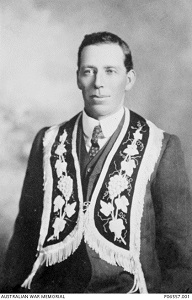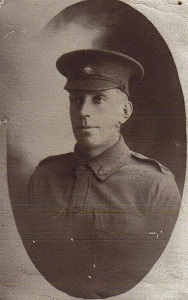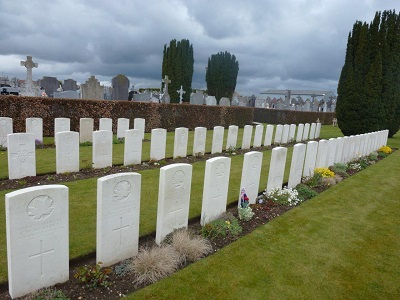
Communities, Sport and Recreation
-
Community Partnerships and Priorities
- Aboriginal Partnerships
- Child and Youth Wellbeing
-
Community Policy and Engagement
- Advisory groups
- Centenary of ANZAC
- Companion Card Program
- Concessions Guide
- Prevention of Family and Sexual Violence
- International Women's Day
- Frank MacDonald Memorial Prize
- Significant Tasmanian women
- Tasmanian Honour Roll of Women
- Women on Tasmanian boards and committees
- Veterans Programs
- Seniors Card
- Tasmanian Carer Action Plan
- Older Tasmanians
- LGBTIQA+ Tasmanians
- Volunteering
- Multicultural Tasmanians
- Food Relief to Food Resilience
- People with Disability
- Women
- Community and Disability Services
- Community Grants
- Contact
- Digital Strategy and Services
- Office of Local Government
- Office of Parliamentary Counsel
- Office of Review and Evaluation
- Office of the Secretary
- Resilience and Recovery Tasmania
- Corporate and Government Services
- Policy Division
- Service Tasmania Unit
- State Service Management Office
Contact Details
By phone
Find the number of a specific division or office to contact them directly or call Service Tasmania on 1300 135 513.
Our staff
Use the Tasmanian Government Directory to find staff contact details
Social media
Follow our social media accounts to keep up to date with specific programs and initiatives.
Sapper Monte Button
 When
Jacqueline Smedley of Marist Regional College in Tasmania was selected to
travel to the Western Front in Europe with the 2012 Frank MacDonald Memorial
Study Tour, she did not consider herself the type of person to get emotional. ‘Getting
to know’ her relatives who served in World War One changed all that.
When
Jacqueline Smedley of Marist Regional College in Tasmania was selected to
travel to the Western Front in Europe with the 2012 Frank MacDonald Memorial
Study Tour, she did not consider herself the type of person to get emotional. ‘Getting
to know’ her relatives who served in World War One changed all that.
As part of the Frank MacDonald Memorial Study Prize, each participant had to research at least one soldier, usually related or of interest to the individual. Jacqueline was aware her great-great-uncle, Monte Edward Button, a tunneller from Stanley in Tasmania who had died of wounds on 6 May 1917, after being in France for only five months.
After some research was undertaken, Jacqueline discovered Monte had five Tasmanian cousins also enlisted in World War One. Two of the cousins, Corporal James Button and Corporal John Joseph Button never returned from the battlefields.
Monte Button

- Date of Birth: 15 February, 1881, Dairy Plains, Tasmania
- Family: Eldest son of Charles and Sarah (nee Siggins) Button and brother to Elsie, Horace, Percy, Ruby and Amy
- Next of Kin: (Mother) Mrs Sarah Button, Stanley
- Background: Moved to Stanley with his family in 1895 and attended the Stanley State School from the 1 July 1895, to the 28November, 1896.
- Occupation: When Monte’s father passed away suddenly in 1907, Monte took over his job as Overseer of the property, Western Plains, for VDL Co at Stanley. This involved taking their stock to the agricultural shows in Hobart and Launceston by either road or sea. From 1912 to 1914, his brother Percy had two butcher shops in Stanley. In 1914 they were advertised as ‘Button Bros Butchers’ but sold the business in Cockerill Crescent to Colin Wells in May 1914. On his enlistment form, Monte wrote he had been an apprentice butcher for three years in Melbourne (even though this time frame is not possible) and was currently a miner at Mt. Carbine, Queensland.
- Physical Appearance: Height: 5 feet, 11 inches, Weight: 168lbs, Complexion: fair, Hair: brown, Eye Colour: blue
- Religious Denomination: Church of England
Community involvement
Monte was highly involved in local organisations, including being a founding member of the Circular Head Agricultural Show Society, a member of the Stanley Brass Band, while also attaining reaching the position of Grand Master of Tasmania in the altruistic Independent Order of Oddfellows (IOOF). The photo above, from the Australian War Memorial shows Monte in his IOOF reglia.
Monte was elected to the Stanley Ward of Circular Head Municipal Council in April, 1914, but resigned in May, 1915 when it is thought he left Stanley.
Military Service

- Service Number: 5964
- Date of Enlistment and Age: 5th August, 1916 at Cairns, Age: 35 Years (stated 30 Years) and listed that he was born in Port Auguston, South Australia.
- Rank: Sapper
- Unit: 3rd Australian Tunnelling Company
- Date of Embarkation: 25th October, 1916
- Name of Ship and Port: HMAT Ulysses, ex Melbourne (A68)
- Service Details:
- Left Australia on the 25 October, 1916 and disembarked at Plymouth, England on the 28December, 1916.
- On arrival he was transported to No.4 training camp at Perham Downs outside Tidworth on edge of the Salisbury Plain (one of four training camps for Australian infantry).
- At the end of January, 1917, he crossed the Channel to the Australian General Depot Base at Etaples which housed base camps and military hospitals.
- 11 February, 1917 he was taken on strength by the 3rd Australian Tunnelling Company (3rd ATC) commanded by 26-year-old mining engineer, Captain Leslie Jack Coulter from Ballarat.
- Early November, 1916 the 3rd Australian Company relieved the 258th Tunnelling Company in the Hill 70 mine sector, east of the village of Loos. Monte was situated in the area of Hill 70 for a couple of months where freezing temperatures were experienced.
- Bracquemont, four kilometres to the north of Loos, was home to the headquarters and billets of the 3rd Australian Tunnelling Company.
- The Australian Mining Corps was founded by the Professor of Geology from Sydney University, Tannatt William Edgeworth David, for military mining and tunnelling. This followed a plea for assistance from the British for experienced miners to help retaliate against the underground warfare by German Engineers. Recruiting officers enlisted miners from all states who were then sent on to local training camps. The 1st Australian Mining Corps embarked Sydney on 20 February, 1916. Despite this, in order to conform to the existing tunnelling units on the Western Front the status of Corps was disbanded but three Australian Tunnelling Companies were formed. Military mining was commenced by 15 May, 1916.
- Tunnellers had the task of protecting an old mining system that was created by the Germans, now occupied by the British; however, it was believed that the Germans still had access to the system, so the task of protecting the infantry against the possibility of the system blowing up fell into that hands of the 3rd Australian Tunnelling Company. Since December, 1916 the 3rd Australian Tunnelling Company were engaged in a program of setting up a defensive curtain of large camouflet charges; a subterranean cavity formed by bomb exploding beneath the surface of the earth.
- In March, 1917 the camouflets were blown to coincide with heavy artillery bombardment of German lines which prompted a German raid to find and destroy mine shafts on the 18 March.
- On the 4April, 1917 the Company’s mining front was extended to include the British mining system known as ‘The Copse’.
- In April, 1917 the ‘Battle of Arras’ took place. The 3rd Australian Tunnelling Company was engaged in mining operations below the front line to the north of Lens.
- During the battle, the British Third Army flanked by the 3rd Australian Tunnelling Company suffered approximately 82,000 casualties.
- Vimy Ridge fell to the Canadians and by the 12th April the Germans had withdrawn back beyond their previous line. All the German mine galleries to the north-west and west of Lens fell into British hands.
- On the 12 April, 1917, the role of the 3rd Australian Tunnelling Company changed from being defensive, with all mining work at Loos, as they ceased to immediately assist the infantry. Following advances made by the British and Canadians during the ‘Battle of Arras’, roads leading to the new front were in urgent need of repair or rebuilding. One of the major roads into the battlefront at Lens was from Calonne to Lievin where the No.1 section worked for most of April. This was to become known as the ‘Australian Road’.
- The War Diary of the 3rd Australian Tunnelling Company for early May stated that: ‘work advanced on Calonne-Lievin Road and a new R.A.M.C. dressing station at St. Pierre. Spr Button E. wounded on 6-5-17. Spr Button died 7-5-17.’
- Date of Death: 7 May, 1917 at the 7th Casualty Clearing Station
- Cause of Death: Gunshot wounds received to the legs on 6 May, 1917
Pilgrimage

The Frank MacDonald Memorial Study Tour provided Jacqueline with the opportunity to visit Monte Button’s grave in the Hersin Communal Cemetery Extension and find Corporal James Button’s name on the Menin Gate Memorial in Ypres, Belgium.
The Hersin Communal Cemetery Extension contains 54 members of 3rd Australian Tunnelling Company. Hersin is located four kilometres south of Bracquemont and two kilometres west of the main road from Bethune to Arras.
“I found a significant difference between visiting Monte’s grave and seeing James’ name on Menin Gate. The cemetery was rather eerie and haunting. As it was an extension, the soldiers were buried in that section, located towards the back of the cemetery,” Jacqueline said.
“When I reached Monte’s grave, I felt as if a piece of home was left with him. My mother and grandfather grew daffodils. Surrounding Monte’s grave were these beautiful daffodils in full bloom. It was a reminder for me that these flowers signified not only a representation from home, which was a way of always being with him, but they were a sign of life and hope.”
Personal Reflection
Monte Button’s great-great-niece, Jacqueline Smedley, aged 16, recited the following at Monte’s grave on 24th April, 2012
We are lucky to have letters that Monte wrote during his time away, which provide us with a personal insight into what he must have endured. One in particular he wrote back to his nephew Charlie who was six years old at the time. For me, there is one line that is rather emotional, as Monte states, “well I wish now that I were back with you again my boy, for it is so wet and cold here and mud up to your neck everywhere”.
I am so proud of Monte. You, the same as every man and woman who battled throughout the war, made the ultimate sacrifice and have served our country well. The flag that I am holding here in my hand, I believe, is what you and many others fought for and should not be forgotten.
I feel honoured to be standing here today and know that this moment will stay with me for the rest of my life. You have done our family proud and even though your great battle may have been many years ago, your sacrifice will never be forgotten.
I would like to finish with a couple of lines from a poem that has been kept within our family for many years, which delves into the sadness of a mother and father after the loss of their son, Horace, who had died at age 19 in 1903. I feel the same anguish would have been felt for another son.
Toll softly – slowly –
For beyond his mother mourneth
With heart too full for tears –
For she rembereth only
His tender years
Toll softly – slowly –
For his sisters are weeping there
Oh what sorrow and heart break
For faces so young and fair
Rest in Peace Monte
- Jacqueline Smedley
View Jacqueline Smedley’s research about Monte Button’s cousins:
- John Joseph Button, from Perth, Tasmania
- James Button, of Longford, Tasmania
View the Button family tree.
Read about other Frank MacDonald Memorial Study Tour pilgrimages
